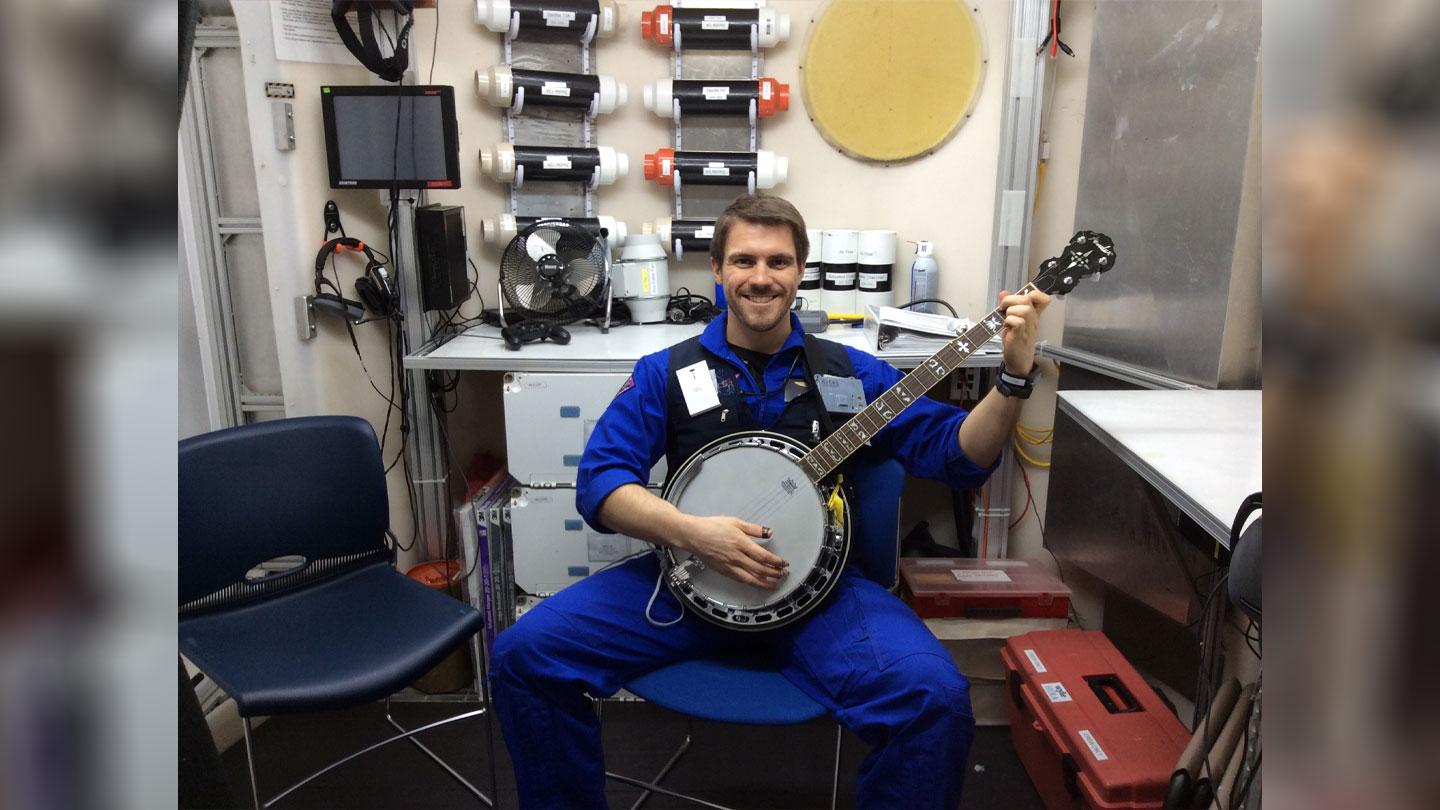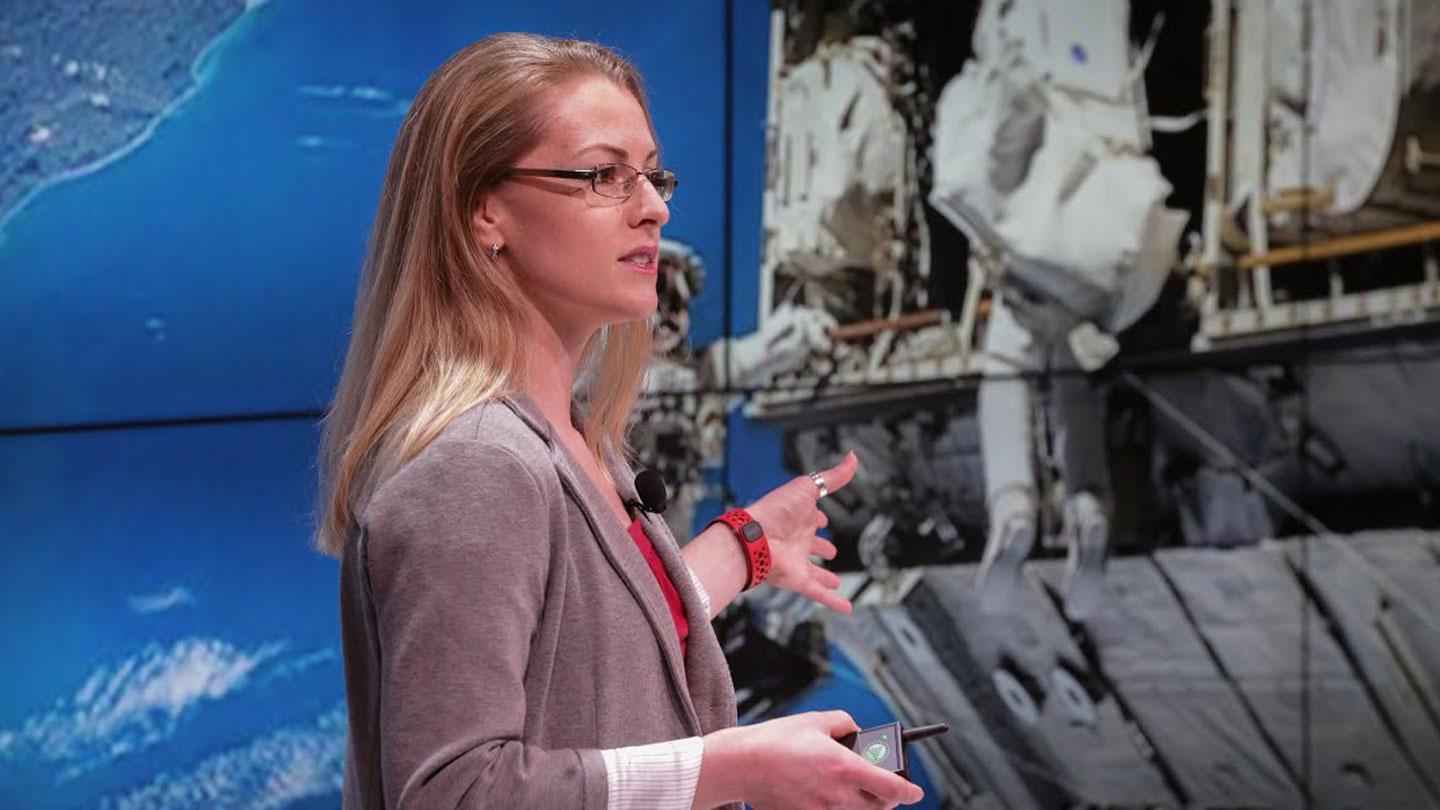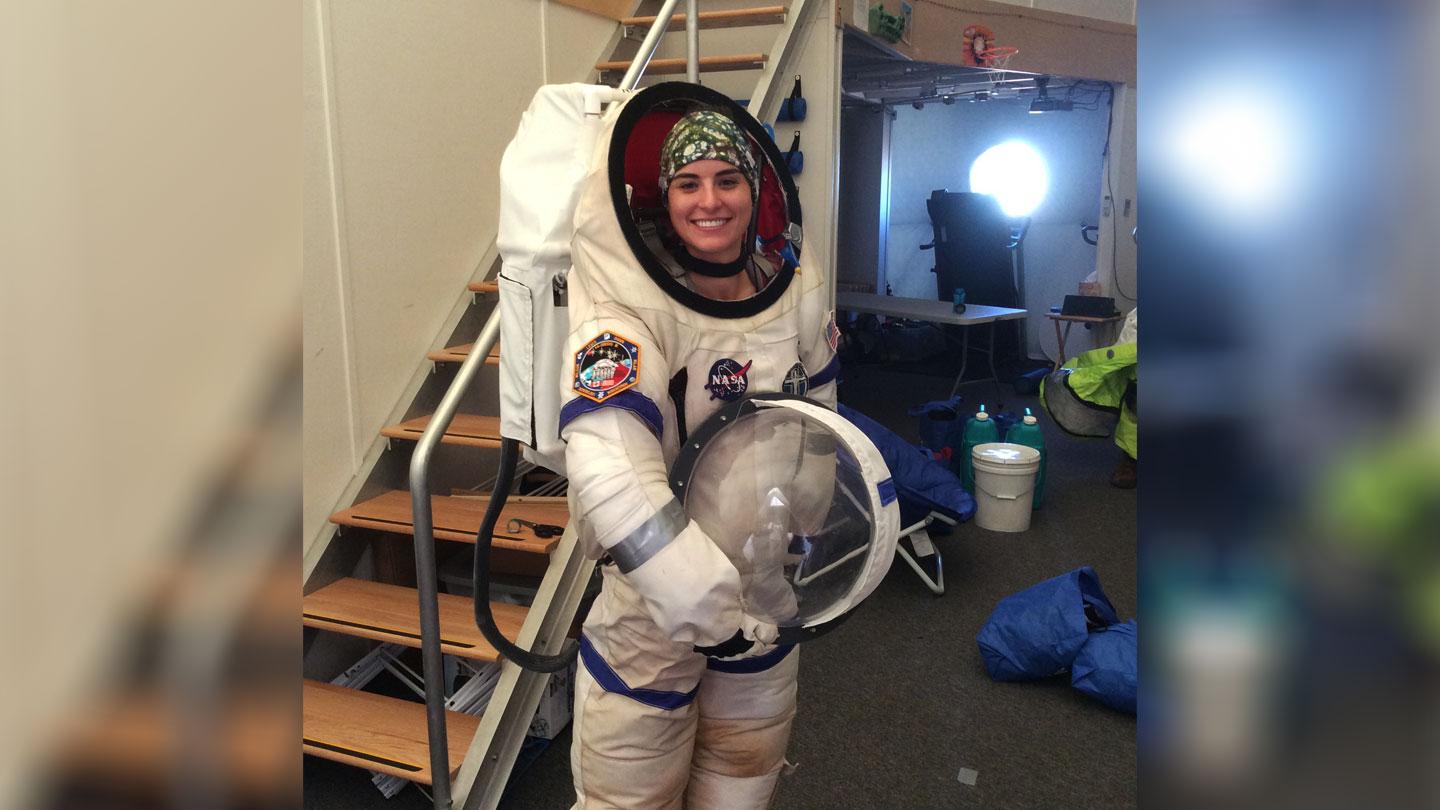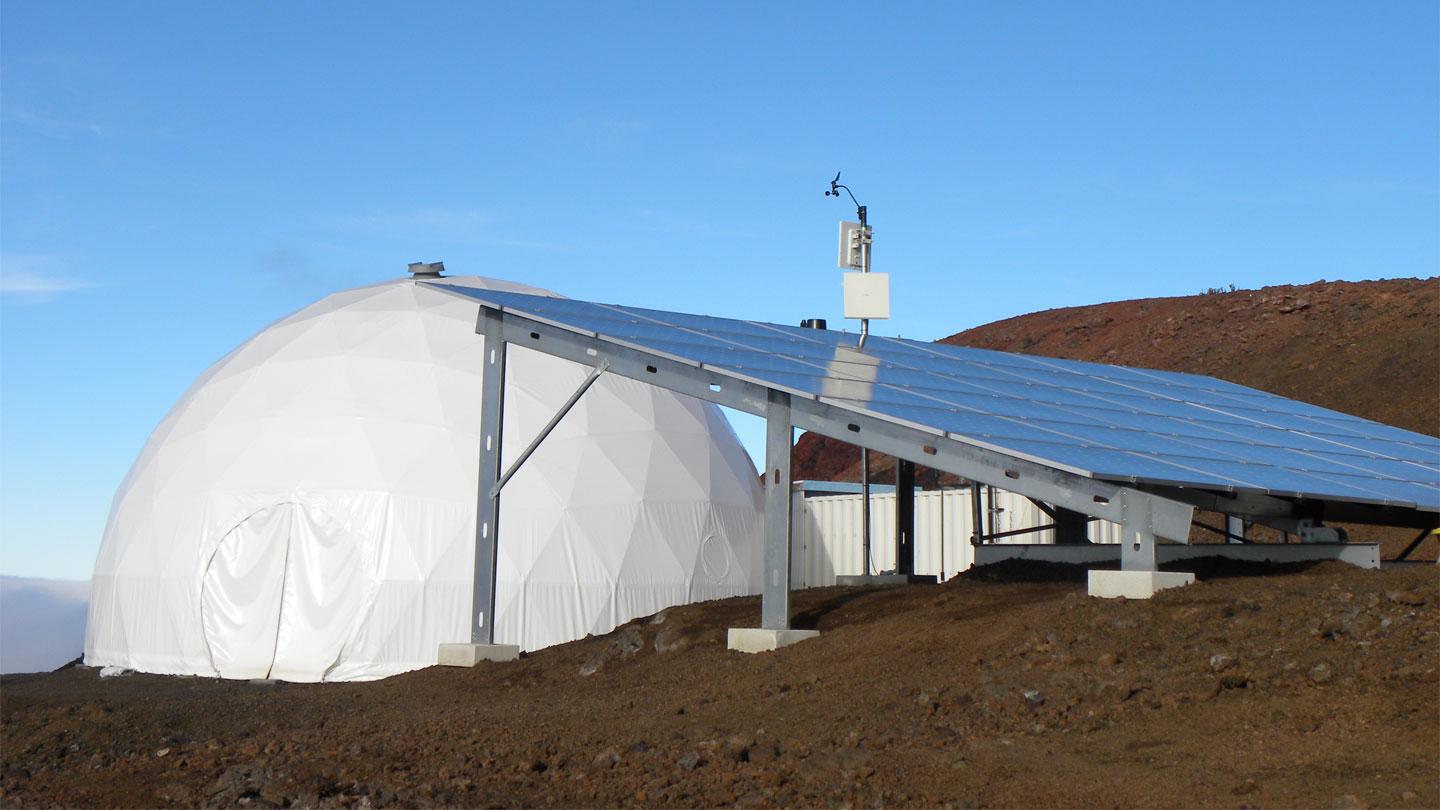Escape Brain Lockdown: Tips on Coping during COVID-19 from KBR Research Scientists
Coping with the challenges of a global pandemic and the possible mental health impacts are not for the faint of heart. The threat of contracting the novel coronavirus (COVID-19) is ever present and many lives have been turned upside down through quarantine measures to protect the public. Even as communities begin to open back up, societal aftereffects like working from home might linger for some time.
Luckily, KBR scientists and human performance professionals have tips to help us navigate this new way of living. Long before the pandemic arose, these experts have been at the forefront of examining the physical, mental, and emotional wellness of humans. Here’s their advice on how to stay healthy during COVID-19 and beyond.
Start something new.
KBR’s Kent Kalogera, Countermeasure System Integrator, manages exercise onboard the International Space Station (ISS) as a part of NASA’s Human Health and Performance Directorate. He recently participated in a 45-day isolation study with NASA where he was able to get a taste of what seclusion is like for the astronauts – and now, for many of us.
“I subscribe to starting something new when isolated,” said Kalogera. “Learning new skills/talents/information is exciting and allows you to challenge yourself. The same applies with taking a creative approach to the activities you already love, like playing a game, designing/drawing or reading a book. Keeping your brain active fosters feelings of satisfaction.”
Focus on the problem, not the person.
During the isolation study, Kalogera and his fellow participants quickly grasped how to effectively deal with conflict while being isolated. It is important to remember to deal with the incident at hand instead of the people involved.
“Focus on the problem, not the person,” Kalogera said. “Lead with compassion in this time of high stress, and remember to be compassionate with yourself. You determine the environment you live in – if you want it to be filled with drama or if you want to be peaceful and act as a cohesive family, it will be.”
Elaborating on why communication is a priority Kalogera adds, “If you’re uncomfortable with what’s happening around you, figure out why exactly you are uncomfortable, and try to address that – maybe it’s a conversation you haven’t had with a significant other or your child is making too much noise. Be the change you want for your immediate space.”
Be a team player.
Of course, easing tensions is a significant part of group living. KBR’s Lauren Blackwell Landon, Ph.D., is the Team Risk Discipline Scientist in the Human Factors and Behavioral Performance (HFBP) Element, NASA’s Human Research Program. She is also a scientist in NASA’s Behavioral Health & Performance (BHP) Laboratory. Her research investigates teams in extreme environments, examining the influence of individual team-oriented characteristics, teamwork processes and team cognition as it affects team performance and functioning.
“We teach astronauts how to cooperate and integrate as a team – for example, accepting accountability and responsibility for whatever you do, tidying up after yourself, making sure the space isn’t just ‘your’ space but ‘our’ space, and ensuring available resources are shared to maintain everyone’s happiness,” said Dr. Landon. “Keep simple things like this top of mind and make more of a concerted effort.”
Plan your schedule, including breaks.
In addition to teamwork, creating a routine is another key strategy to follow during quarantine or telecommuting. Following a schedule helped Kalogera to be more efficient with his days and create a sense of normalcy, breaks included. “Breaks are a form of self-care. Go outside if possible or listen to music. It’s the escapist mentality – being somewhere else.”
KBR Human Performance Engineer Jocelyn Dunn, Ph.D., learned a similar lesson during her eight months of living inside a dome habitat with five fellow volunteers as part of a Hawaii Space Exploration Analog and Simulation (Hi-Seas) mission in 2014 and 2015.
“Normally we plan all kinds of things to get together and now, during this confinement, it’s important to plan time away. Without routines and structure, a lot of bad habits emerge,” Dr. Dunn said. “Artificially setting constraints helps.”
It comes down to sensory stimulation. “If you’re looking at the same thing all the time, you’re not getting a lot of sensory stimulation, which is similar to astronauts at ISS,” Dr. Landon said. “That’s why they love looking out the window down at Earth. If you’re trapped in your house all the time, one of the best things you can do is go outside to break out of that environment.”
Unsurprisingly, time management can also help encourage a healthy work/life balance during quarantine, since the lines are blurred more than usual. “Try to find ways to create boundaries for those different aspects of your life; don’t check your email at all times of night, have a dedicated workspace,” Dr. Landon said. “That mental switch is important.”
Stay virtually connected.
Another challenge during the pandemic is the importance of physical distancing, but not necessarily “social” distancing, as commonly described.
“It’s extremely important to make sure you’re staying connected to those not in your bubble. Humans are social animals, so we feel like we’re with people more when we see their faces and hear their voices. Video allows us to react in a live fashion and see body language – there is a lot of language that happens that’s non-verbal,” Dr. Landon said.
“It is easy to become disconnected while working remotely. Maintain the walk-by-someone’s-desk-and-chat feel by calling people instead of emailing. These calls to family and talking to teammates virtually can really help with disposition and rapport,” she said.
Admit when you are struggling.
Indeed, being cognizant of your own mental health throughout isolating or working from home is vital, Kalogera stressed. “It’s really easy to think self-care is a weakness in our culture, but take away that stigma and you’ll find your days are a lot easier. Simple and easy is not a bad thing.”
During her Hi-Seas experiment, Dr. Dunn discovered numerous indicators of shifts in social and psychological wellbeing, like a change in sleep routine or social aversion.
“Watch out for behavioral changes like these. Reach out when you have struggles, whether to a friend, spouse or therapist. Try to counteract a negative psychological state by eating fresh food and exercising. You need accountability and someone to talk to.”
Pay attention to your heart rate.
While in the habitat, Dr. Dunn tracked the mind-body connection, noting that waking heart rate is a good gauge of biological and perceived stress. “If your heart rate is rising over time that can be an indicator you need to adjust your sleep or diet due to elevated stress. Wearable wrist devices can help you stay on track and check in with yourself,” she said.
As businesses begin to relax quarantine measures, people are going to have to adjust to a new “normal.” However, remember every transition has a grace period.
“As COVID-19 ‘stay at home’ and recreational activity restrictions are lifted, we may experience shifts in our view of the world similar to what astronauts feel when returning back to daily life on Earth. Just like astronauts, take six months to get their bearings after missions, it’s unreasonable to expect people to be back to normal in a couple of days,” she said.
It’s true – we may not know what the future holds or how long it will take to feel comfortable again, but there is one thing KBR scientists and engineers know for certain: each challenge teaches us more about the human’s ability to survive, and this research is critical to us all.







